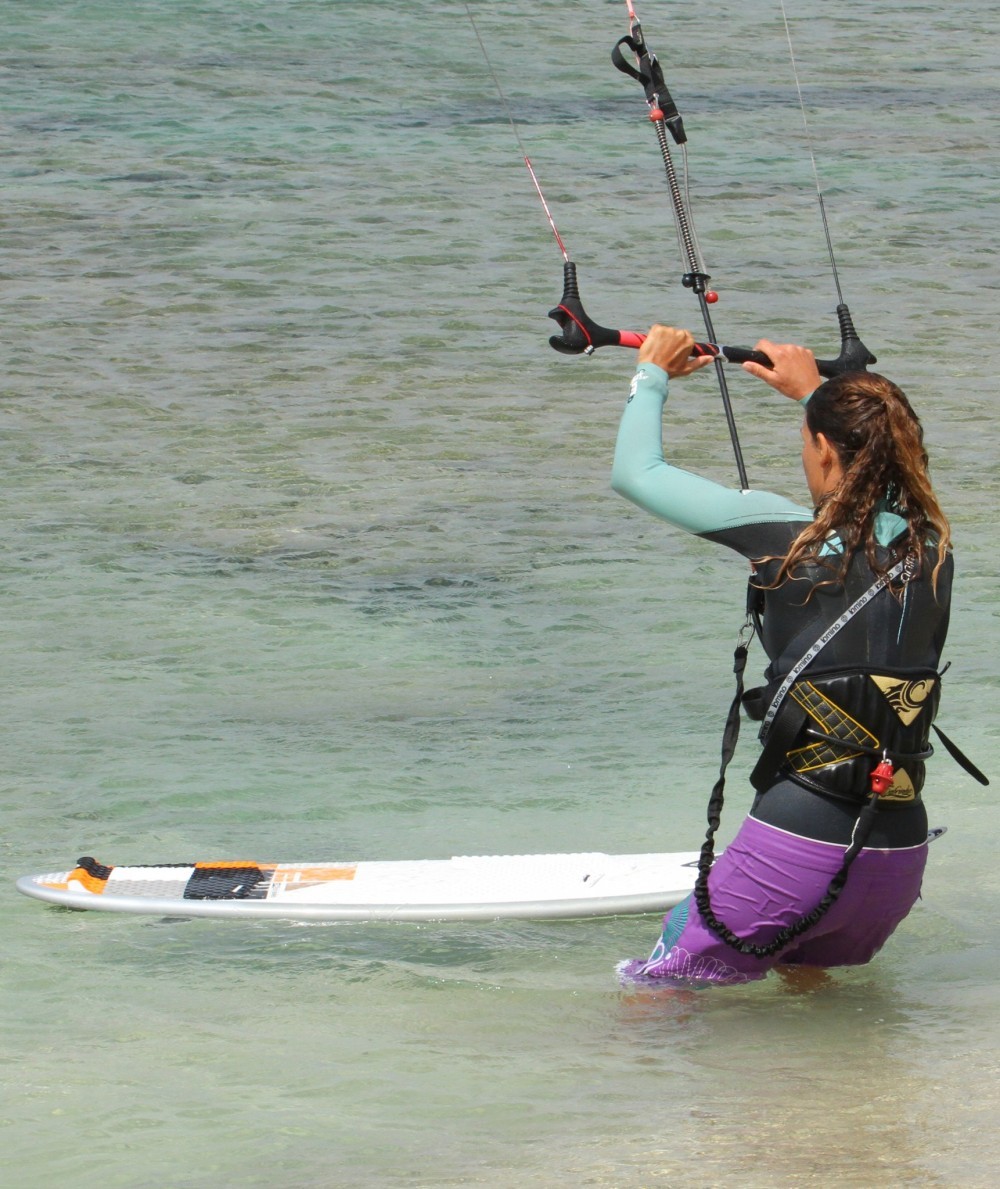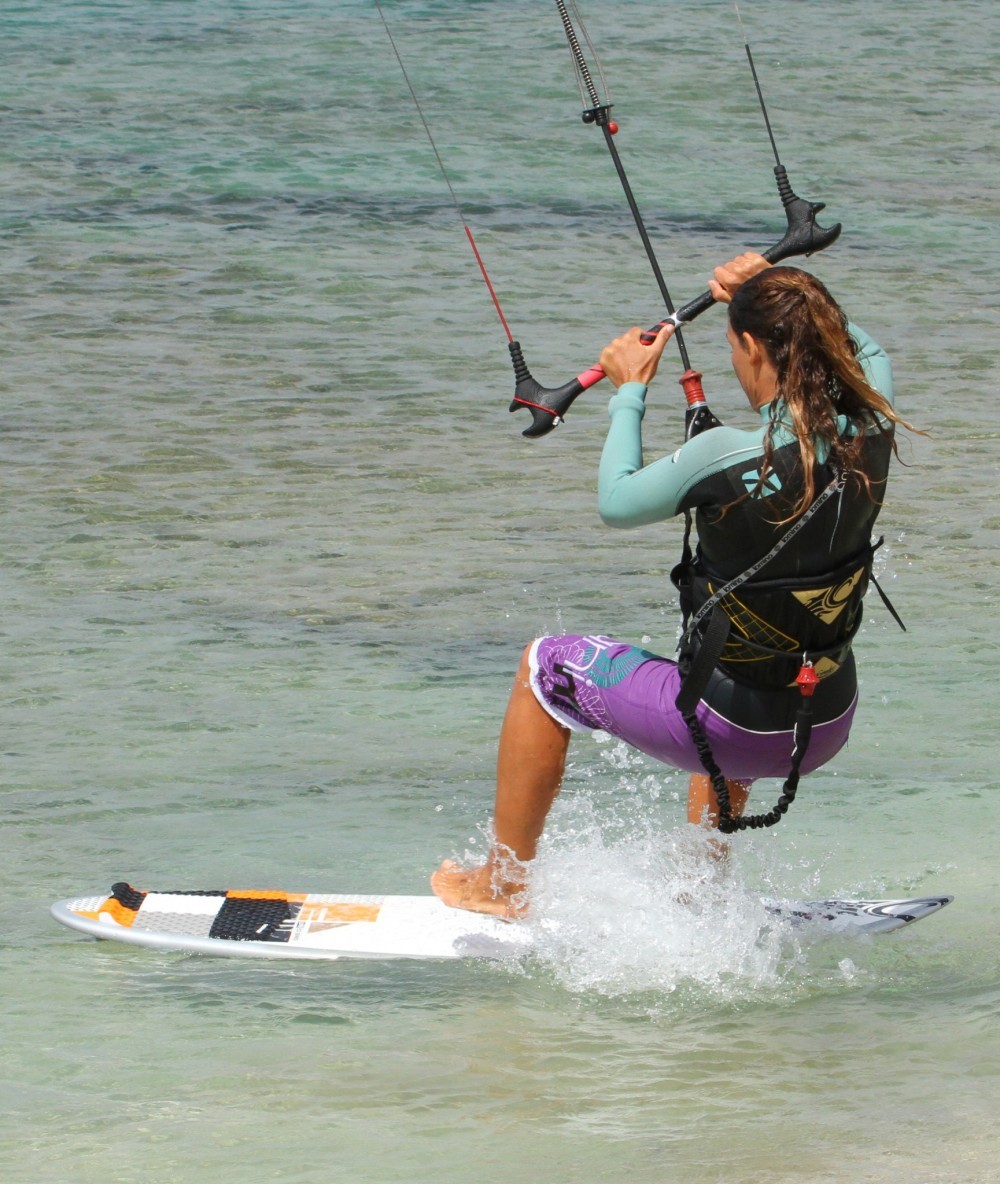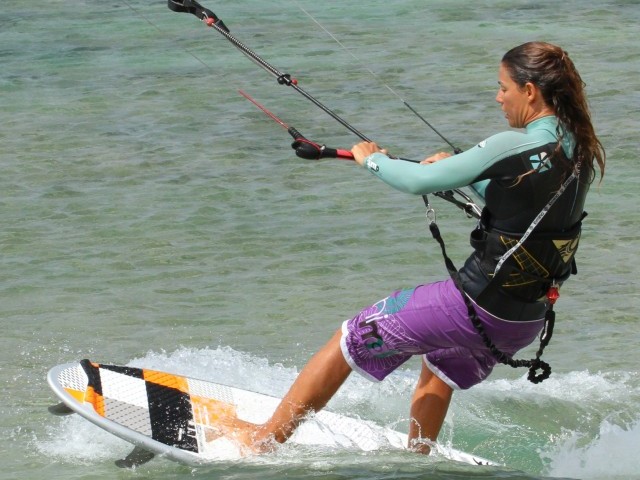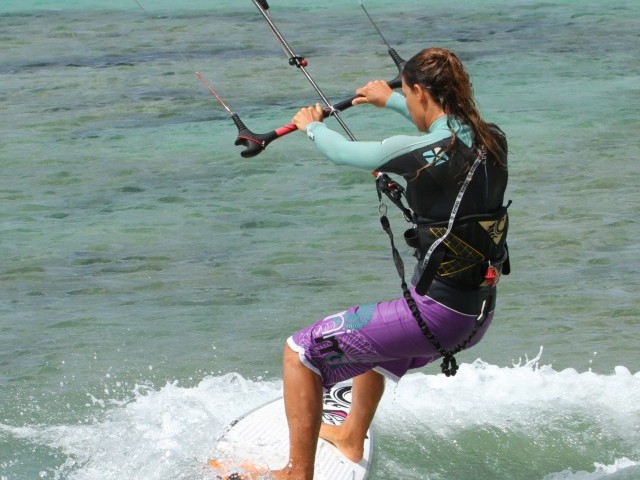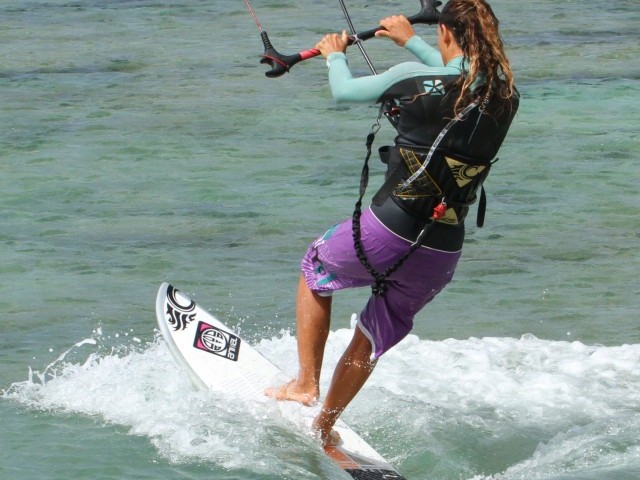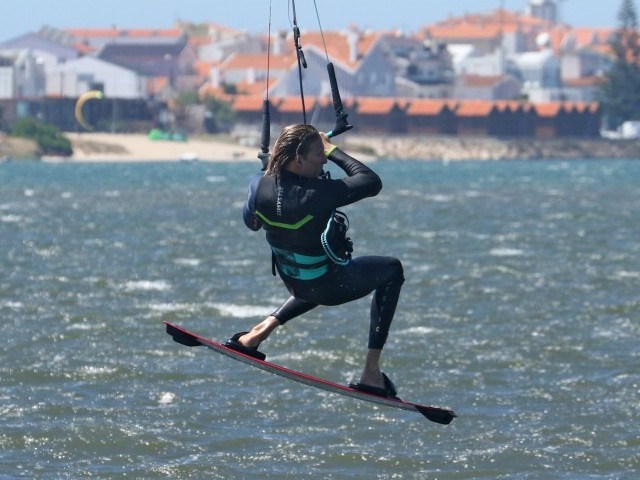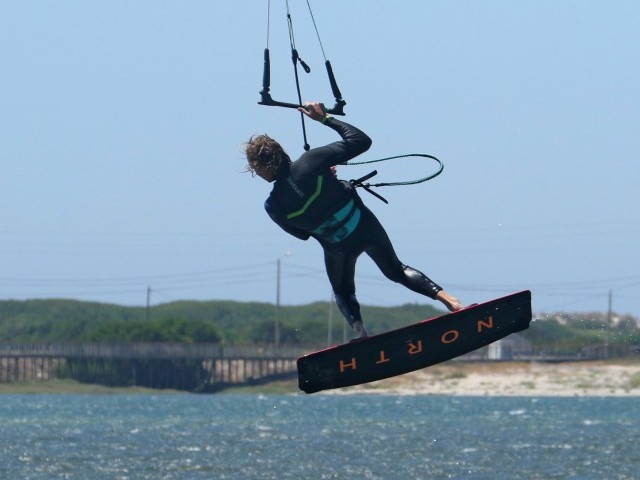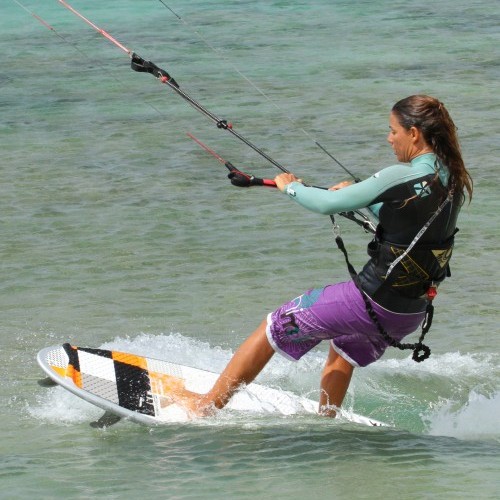
Fin First Beach Start
Technique / Intermediate
Introduction
Mucking around on a surfboard is as much about becoming more instinctive, and understanding how your board and kite work as it is about deliberately learning new skills. So here we’ve got a move that can come in useful if the waters a bit shallow and you don’t fancy scuffing your fins, but that will also get you freeing your feet and feeling your board, which can only make you a better rider. Dare we say it, but any windsurfers amongst you will know only too well how much you can improve messing around in light airs, and the same applies to kitesurfing.
So the idea here is to beach start with the board facing out to sea fin first, and keep the fins up out of the water. We do however suggest learning this first in adequate depth, so that should you get it wrong you neither damage the fins, the nose of the board or of course yourself. Once you’re on the board you should be able to ride as far as you need and then comes the next moment of truth, turning the board back, and changing your feet. In the video we have a fairly quick transition from beach start to foot change so that you can see it all in one, but there’s no need to rush.
Let us start by looking at a few key points.
Preparation
Firstly make sure that your board is well waxed, as potentially you’ll be standing where you normally don’t, particularly on the nose. When you place the board in the water, have the fins pointing slightly down wind, as if you place the board across the wind the breeze will push the nose away from you and the board will end up facing too much into the wind. Secondly make sure you stand right back next to the nose, as you want to be landing on the back two thirds of the board, so if you stand in the middle you’ll end up on the tail pad. You can see here that Karine is standing well back near the nose of the board with the kite already behind her, so that she can dive and go.
Beach Start
You’ll be aiming for a jumping beach start, with both feet landing pretty much at the same time on the board. You can see here that Karine has dived the kite, jumped up and is looking down at the board to plant her feet. In fact her back foot will land first, which is preferable to landing front foot first, so when she dives the kite, Karine lifts her back leg and uses her front leg to push up. You also need to land in the right place to ride, which will vary from board to board. As a rule of thumb your front foot needs to be behind the fins, so by standing on the beach with a wide-ish stance you should be able to work out where your back foot should go.
Riding
Looking at Karine you can see that her riding stance looks fairly normal. She has her front leg slightly bent, with her hips and weight dropped back over the nose of the board. Her front foot is pretty much centred on the board whilst her back foot is very much on the upwind side, and her weight is on her heels, edging the board slightly. This edging is what gives you the control of the board, the weight back on the nose keeps the fins up, whilst the front leg pushes the tail and keeps it from turning up into the wind. In this position you should be able to ride comfortably.
Turning
Turning the board upwind is probably the simplest part in all if this. Karine has moved her weight forwards towards her front foot by bending her front leg and moving her hips towards the tail of the board. As the fins and the back of the board bite they will grip and swing the tail of the board upwind. If you feel stable enough you can move your front foot forward towards the tail of the board, which will make for a more dynamic swap. As the board turns Karine continues to move all of her weight onto her front foot and the tail of the board. As you can see in the picture it looks as if Karine will pivot the board around to toe side. You can also see that Karine’s kite is still around 10.30 or 11, pulling her forwards. This is crucial for balance, as if she were to take the kite up she would have no support.
The Foot Change
As it happens Karine does not pivot the board to toe side as all her weight is on the wrong side of the board, so she would just end up trucking off down wind. Instead it’s a foot change to get you back around to heel side. You can see here that Karine brought her right foot from the nose of the board and placed it back, just in front of her back left foot, but pointing the opposite way. She was able to do this because she had already moved her weight onto her left foot. When she moved her foot she places it in front of the other one, making sure that her heel, and therefore weight go onto the new upwind side of the board, so momentarily she is standing with her feet pointing in opposite directions. This way the board will turn across the wind as she steps her left foot forward.
Top Tips
When you first start this it doesn’t matter if you’re too far forward on the board and the fins are still wet, with a bit of practice you’ll find the right spot and get your weight back as you make contact with the board.
Try doing the foot change on land before you attempt it on the water, as it needs to be fairly slick. Just think about bringing your back foot up so that when you place it down, your heel butts up against the big toe of the stationary foot, this way you know that your weight will go onto the new upwind side of the board. Then transfer your weight and more the other foot forward.
Finally it helps to be moving! Although you may want to do this at a snails pace, if you do, your board will sink, stop and you’ll be yanked forward and off by the pull of the kite.
Looking at the Beach Start steps in Sequence 1.
- Pic 1. Karine places the board out in front of her, with the fins pointing slightly down wind and her kite already behind her.
- Pic 2. She then dives the kite with her front hand, already looking at where she wants to land on the board.
- Pic 3. As the kite pulls, Karine jumps up off her front foot and lifts her back foot towards her waxed board.
- Pic 4. Still looking at the board, Karine lands back foot first with the kite pulling.
- Pic 5. With both feet on the board Karine leans back against the power in the kite to lever the fins up and out of the water.
- Pic 6. Edging against the kite Karine can now ride as far as she needs.
And Sequence 2. For the foot change.
- Pic 1. Having cleared the shallows Karine moves her front foot up a bit towards the tail of the board whilst keeping the kite driving forwards.
- Pic 2. She then bends her front leg and moves her hips towards her front foot, which turns the board upwind as the fins bite.
- Pic 3. As the board turns further upwind Karine moves all her weight over her front foot.
- Pic 4. Straightening her right leg and swinging her hips completely over the tail of the board allows the board to pivot around the fins.
- Pic 5. As the board pivots through the wind Karine must change her feet as her weight is now on the down wind side of the board, so she cannot turn it any further.
- Pic 6. Karine lifts her right leg, twists her toes and knee to point across the board and brings her foot back, placing it in front of her other foot with her heel touching her toes, and therefore with her weight on the upwind side of the board.
- Pic 7. With her weight now on the moved foot, Karine can lift her other foot.
- Pic 8. And step forward to her more usual kiting stance!
Common Problems
With the beach start chances are that at first you’ll be too far forwards, but with practice you’ll be able to get the fins up as soon as you land on the board. To help this you’ll need to land with power and weight both on your heels and back over the nose.
For the foot change, as we already mentioned, you need to be moving or you’ll get pulled over the front. If you’re not comfortable moving with some speed move your weight forward and don’t worry too much about keeping the fins up.
If you’re making the foot change but falling off the board, whilst it points down wind, you are not getting the moved foot back and across enough onto the new upwind side of the board, and thus the board doesn’t pivot and turn with you.
Keystones
- Plenty of Wax
- Jumping beach start with power
- Get moving before changing
- All weight onto tail before changing feet
- Place moved foot back and across
This technique article was in Issue 32 of IKSURFMAG.
Related
By Christian and Karine
Christian and Karine have been working together as a coaching team, running improver to advanced kitesurfing clinics since 2003.










